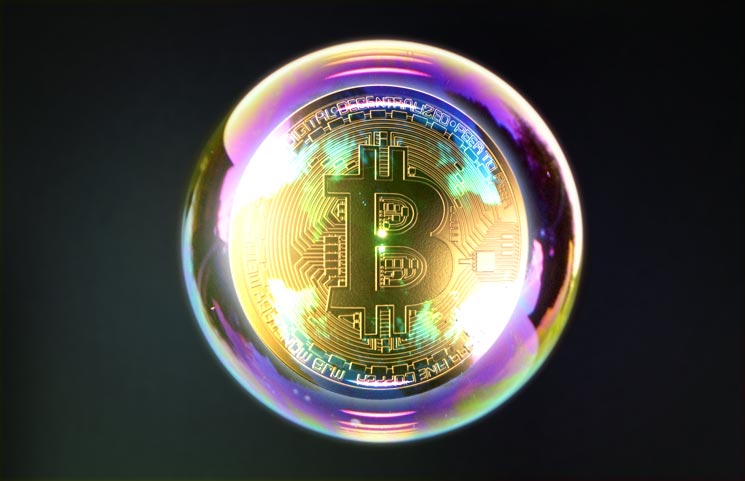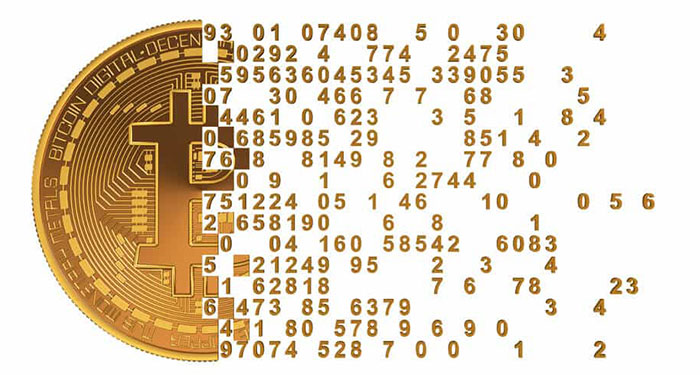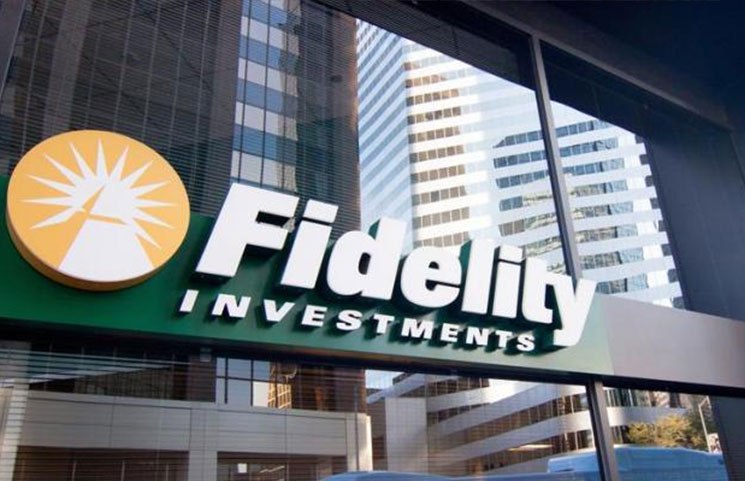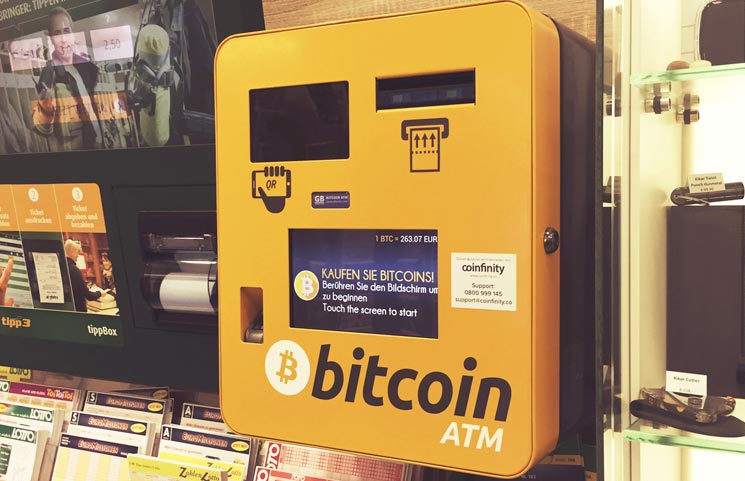Bitcoin Cryptocurrency Exchanges
Is Bitcoin A Bubble? Learn The History Of Cryptocurrency Crashes

The emergence of bitcoin as a means of payment system in 2009 changed the nature of monetary system in a drastic way. It received wide acceptance by various business entities and it also emerged as a new investing tool. It is generally agreed that the global financial system is currently expanding at a very high rate. However, the expansion of cryptocurrencies has alarmed various financial experts.
This has provoked critical questions such as: what is bitcoin? What is the value of bitcoin? Is this another bubble? Will bitcoin last in the financial platform?
In order to get the correct answers to these questions, it is important to first understand certain concepts and phenomena. One has to understand the concept of ‘money' so as to know whether bitcoin has reached the threshold for money. In addition to that, one must also understand how crypto currencies operate. These understandings will allow one to assess the validity of bitcoin and its growth in the financial markets.
The main issue discussed in this article is not about the validity of bitcoin. This article gives a critical financial analysis and it later explains whether bitcoin is really a bubble waiting to burst.
Is Bitcoin In A Bubble?
It is important to understand the concept of money and to get familiar with the regulatory institutions. Traditionally, anything that is regarded as a universal medium of exchange is considered to be money. The monetary system has evolved throughout history and various items have been used as money. During antiquity, money evolved from cowrie shells to precious metals like bronze, copper, silver and gold.

The current global economic system uses fiat money; paper money which is backed by precious commodities like gold. Most scholars argue that as time goes by, less value items are used as money and the only thing that gives them value is the confidence of the users. The confidence of the user is usually guaranteed by the central banks. Central banks are charged with the responsibility of regulating the supply of money.
The paper money is printed by central banks and they allows commercial banks to increase money supply within stipulated regulations. The case is quite different when it comes to bitcoin because it is not regulated by central banks at all. In addition to that, the supply of bitcoins is not regulated by standard measures. It is these realities that have evoked the questions of validity.
Fortunately, bitcoin is considered legal in many geographical entities; therefore, there is a growing confidence among its users. The announcement by NASDAQ in November 2017 to launch bitcoin futures in 2018 has further boosted the confidence of the users. Unfortunately, confidence does not answer the big question of the day.
The term “economic bubble” refers to a cycle within the four economic phases where a commodity, stocks or securities escalate rapidly based on positive news about the future. The economy usually has four phases: Expansion (boom/bubble), Peak, Contraction (burst/recession) and Trough.
In an economic bubble phase, the price of the commodity or stocks in question exceeds its fundamental value. It is usually caused by positive speculations which create redundant demand. It is normal for any stock to have a boom and burst phase; therefore, a boom phase does not make a stock or commodity a scam or illegal. These are just phases which reflect supply and demand of the commodity or stock in question.
The rising demand of bitcoin is a result of the acceptance it has received among governments and institutions. It should also be noted that countries like Japan which have legalized bitcoin only acknowledge it as an asset and not as a medium of exchange. This means that bitcoin is not yet a currency; therefore, it is bound to experience the bull and bear phase just like any other financial asset.
Bitcoin has increased from 449 in January 2016 to 18,000 in December, 2017. This has put the bitcoin in a very steep bull phase without any major correction phase. Any investor knows that the market conditions are usually a reflection of supply and demand and whenever there is a lot of demand the supply reduces and vice versa.
The price of an asset is determined by the supply and demand, in the sense that if the supply exceeds the demand, then the price go down and vice versa. In the case of bitcoin, the demand has been increasing ever since 2009 and this suggests that the supply ought to reduce. However, the supply of bitcoin is actually unregulated and depends on computer processes. The demand of bitcoin is actually caused by the underlying fundamentals which are based on acceptance of the crypto currency and speculations regarding its future.
Understanding the cause of the demand of bitcoin can help to determine whether bitcoin is actually a bubble or not. Since bitcoin is only regarded as an asset and not as a currency, it is bound to display certain development behaviors just like any other asset. In addition to that, it should also be noted that bitcoin is also traded in spot market. This means that speculators also determine the price movements of bitcoin.
These aspects openly suggest that bitcoin is within the known economic matrix; it can be subjected to either boom or burst phase by the underlying economic conditions. Therefore, it will be correct to point out that the current phase of the price range of bitcoin can be classified in any of the four economic cycles.
A closer Look at the definitions of the economic cycles show that the only cycle which perfectly fits the description of the current phase of the price range of bitcoin is the boom/bubble cycle. The rapid escalation of the price of bitcoin can be classified as a bubble and just like any other bubble in the history of finance, it is bound to burst.
Conclusion
The above analysis suggests that bitcoin is actually in a bubble phase. However, this does not mean that the bubble will burst tomorrow or in few days to come. The duration of an economic phase cannot be predicted because the variables which determine a business cycle are usually complex.
The price of an asset is usually influenced by mathematical programs as well as the psychology of the players. Therefore, a phase can last for a short period or it can extend for a very long time. The most important thing to note is that bitcoin is in a boom phase and just like any other previous bubble, it will soon burst. The end of the bubble phase will not mark the extinction of bitcoin but will actually mark the beginning of a new economic phase; a burst.
Altcoin News
47% of Institutional Investors Interested in Digital Assets: Reveals Fidelity Research

It’s time to get hard-core bullish!
The latest report by the investment giant Fidelity that has entered the crypto space with its Fidelity Digital Assets has shared interesting and bullish research that states institutions are very much active in the crypto space and in the next five years, it will further increase.
Conducted by Greenwich Associates, the research took place between the period of November 2018 and February 8, 2019, that covered 441 institutional investors in the US. The time period involved is of importance here as well as this has been at the time when Bitcoin was already down about 70 percent and further dropped to its yearly low.
Institutions ‘overwhelmingly Favorable’ about Appealing Characteristics
The research finds that institutional investors are “overwhelmingly favorable” about the appealing characteristics such as technology and low correlations to other assets of the digital assets.
- About half of respondents (47%) appreciate digital assets as an innovative technology play
- 46% find digital assets’ low correlation to other assets among the most appealing characteristic
- Financial advisors (74%) and family offices (80%) view the characteristics of digital assets most favorably
Source: Fidelity Digital Assets
Four in Ten Open to Future Investment in Cryptos
The survey reveals that about 22 percent of institutional investors already have some sort of exposure to digital assets. Most of the investments have been made within the past three years only.
However, the future is bright as four in ten respondents say they are open to future investments in digital assets over the course of the next five years.
But what's most interesting is nearly half that is 47 percent of the institutional investors view digital assets as something that has a place in their investment portfolios.
In response to his huge number of institutional investors interested in cryptos, Bitcoin bull Tom Lee says, “@DigitalAssets (Fidelity) carries institutional credibility that will help many of these institutions to make that crossover.”
However, the preference to hold digital assets vary, with 76 percent of institutions survey stated security and safety as the most important considerations when considering custodian services.
The momentum is building!
The interest is ever growing from different fields as the company has been seeing interest from endowments, pension, foundations, and family offices over the past several months.
The research also reveals that institutions are more aware of regulatory and investment developments more than they were six or twelve months ago.
Bitcoin Cryptocurrency Exchanges
Bitcoin ATM: How To Use Crypto Automated Teller Machines?

Did you know that Bitcoin ATMs exist? And if you do, would you know how to use one?
If you’re unsure of either of these questions then you have come to the right place. In this guide, we’ll go over how to use a Bitcoin ATM and how to buy and sell Bitcoins using them. We’ll also go over some key factors on how to locate the nearest Bitcoin ATM near you.
But before all of this, it’s important to take you through a quick introduction of Bitcoin ATMs in general.
What Are Bitcoin ATMs?
Bitcoin ATMs are similar to traditional ATMs that print out fiat currencies. However, unlike traditional ATMs, Bitcoin ATMs let you withdraw Bitcoins instead of fiat dollars, yen, pounds etc. Some take step further by allowing you to convert Bitcoins into fiat currencies, and some work the other way too.
A key feature of Bitcoin ATMs is that they let you buy and sell Bitcoins without requiring any personal information. There is no KYC or AML compliance needed to operate a Bitcoin ATM, which can make them a great way to keep your identity private.
However, there are costs involved when using a Bitcoin ATM too. Bitcoin ATMs generally charge a fee of 7-10% for each transaction, which is money well spent by some people’s standards.
In order to use a Bitcoin ATM, you’ll need to find one first, which can be a challenging obstacle because of the spare numbers of Bitcoin ATMs.
How To Find A Bitcoin ATM Nearest To You
Using the Coin ATM Radar service, you can easily find the nearest Bitcoin ATM closest to your current location. This also allows you to search for Bitcoin ATMs in other neighbourhoods and even other countries if you plan to travel overseas.
Through using the Coin ATM Radar service, it gives you the following benefits:
- Find the nearest ATM on a map
- Search for the closest ATMs in your vicinity
- See all the relevant details about the Bitcoin ATM, including fees, limits, and type of ATM (buys and sells or buy or sell only)
- Get directions from your current location to the desired ATM
How To Use Coin ATM Radar Service
To use the Coin ATM Rader service, go through the following steps:
- Navigate to the Coin ATM Radar Service website and look at the live map that displays a list of ATMs that are in your present location
- Add your location and city and then click search ATMS
- Choose your nearest ATM and click on it to see the details
- Click ‘Get directions’ to get a Google maps overview for the location and directions
Now that you are aware of how you can find a Bitcoin ATM, let’s go over how to actually use a Bitcoin ATM for both buys and sells.
How To Buy And Sell Bitcoins Using An ATM
Selling or buying Bitcoins through an ATM is not always easy as there are various kinds of Bitcoin ATMs in circulation.
Below is a list for the different types of Bitcoin ATMs that you’ll see around the world
- Genesis1 Bitcoin ATM
- Satoshi1 Bitcoin ATM
- Satoshi2 Bitcoin ATM
- Lamassu Bitcoin ATM
- Lamassu with Santo Tirso
- BATM2 Bitcoin ATM
- BATM3 Bitcoin ATM
- BitAccess Bitcoin ATM
- BitXatm Bitcoin machine
- Robocoin kiosk
- Skyhook bitcoin machine
Do not let the above list intimidate you. There are numerous YouTube videos that you can access for free to give you an overview of how to use each Bitcoin ATM.
How To Buy Bitcoins Using The Genesis1 Bitcoin ATM
- Click on the Buy Bitcoin Button
- Then chose your coin, which in this case will be Bitcoin
- Scan your QR code
- Scan the QR code of your wallet
- Insert your money
- Then press finish
- Remember to take and check your receipt
How To Sell Bitcoins Using The Genesis1 Bitcoin ATM
- Select the withdraw cash option
- Select Bitcoin
- Then enter the amount that you wish to withdraw
- Send the desired amount of Bitcoin to an address or scan the QR code from your mobile wallet
- Take out your cash
- Again, remember to take a receipt and double check that you sent the right amount of Bitcoin and to the right address
Buying Bitcoins Using Lamassu Bitcoin ATM
- Scan the desired Bitcoin address
- Insert your dollar bills
- Select the send Bitcoins option
How To Buy Bitcoins using BitAccess Bitcoin ATM
- Select start
- Then enter your phone number (mobile) to continue
- Confirm the verification code delivered to your phone number
- Now scan the QR code of the Bitcoin address that you wish to receive your Bitcoin to
- Enter fiat dollars
- Now your coins will be sent if it is a valid Bitcoin address
Bitcoin ATM Summary
Operating a Bitcoin ATM is a simple case, as long as you are close enough to use one.
But a word of caution: some ATMs need you to scan your identity documents such as a passport or drivers licence. The ATM may also ask for a phone number to comply with KYC laws. However, this will generally only happen in the case of a large amount of Bitcoins.
As stated previously, there is not a huge number of Bitcoin ATMs to choose from and some of them can only be used to either buy or sell Bitcoins, as ATMs that do both are very hard to find.
To get around such hurdles, there are a few different kinds of Bitcoin ATMs that you can use to sell your Bitcoins that sit in a remote wallet You can then withdraw those coins for cash once the transaction completes from the nearest Bitcoin in your location.
A minority of ATMs even support Bitcoin virtual debit cards, which means you can withdraw fiat cash in case you need while overseas. This could help eliminate some of the stresses and troubles of exchanging your money while abroad.
Over the next few years, it’s likely that the quality and number of Bitcoin ATMs will increase and that we will witness different kinds of ATMs in various parts of the world, just like we saw with traditional ATMs.
Best Rated & Top Ranked
Crypto Checklist For Which Cryptocurrency Exchange Is Right For You

If you've done your homework on investing in cryptocurrency, you probably know that you need to choose an exchange to facilitate your transactions. Many are available to choose from, each employing a different fee structure, cryptos available to trade, and deposit mechanism. The list below details five of the most popular exchanges along with some of the pros and cons of each, enabling you to make an informed decision on which one you should use.
CoinBase

CoinBase, often recommended as a beginner's first cryptocurrency exchange because of how easy it is to use, has an extremely beginner-friendly interface. You can link a bank account or credit card to fund your transactions easily, and withdrawals may be paid to your bank or Paypal account, making cashing out hassle-free. Money deposited in your account is also insured, a feature that no other exchange can currently claim.
All of these conveniences come with trade-offs, however. The site charges transaction fees of up to 3.99% per trade on accounts funded with a credit card, and even bank-funded accounts are subjected to a relatively high 1.49% fee. CoinBase only trades in Bitcoin, Ethereum, Bitcoin Cash, and Litecoin, leaving more daring investors with limited selections. Finally, spending caps limit how much investors may spend on the site per week.
Gemini

Investors interested in crypto is as a short-term investment opportunity, Gemini may be the exchange for you. The site charges minuscule transaction fees of a quarter of a percentage point per trade, with no added fees for deposits or withdrawals. This exchange also offers the convenience of linking a bank account to fund your crypto purchases with traditional currency. Users can start trading before their deposit clears, although they will not be permitted to cash out until it does.
The most significant downside is a stark lack of choice: only Bitcoin and Ethereum are available at the moment. There is also a $500 weekly spending limit that there is no way to work around, limiting the amount you can invest at a time.
Bittrex

Bittrex is a true cryptocurrency exchange with an interface that will feel immediately familiar to anyone who has traded stocks in matching pairs on a Forex exchange. It offers over 190 tokens to choose from, virtually ensuring that all altcoins are available. The site's fees are also very reasonable, matching Gemini's for most trades.
The most substantial negative for Bittrex is how intimidating a Forex system looks to somebody who has never used one. There is also no way to exchange fiat currency for crypto on the site, forcing users to have an account on another platform such as CoinBase or Gemini to purchase crypto for transfer to Bittrex.
BitStamp

BitStamp is sometimes referred to as Europe's CoinBase because it is the most popular, beginner-friendly exchange for the European market. Investments funded with a SEPA account have no deposit fee, a flat 0.90 EUR withdrawal fee, and affordable transaction fees. The platform offers affordable rates to users outside of Europe as well, but the greatest appeal here is for Europeans.
BitStamp has a fair selection, including Bitcoin, Ethereum, Ripple, and Litecoin. Users are advised to avoid their credit cards when funding their accounts. Transaction fees on credit card purchases range from 5% to 8% based on the amount of the deposit, and investors want no part of that.
Kraken
![]()
Kraken offers 16 tokens to choose from, including Z-Cash, Monero, Ripple, and Dash as well as industry stalwarts such as Bitcoin and Ethereum. It has a Forex-style interface comparable to Bittrex but allows users to link a bank account to fund their transactions as well. Fees vary based on the trading pair, but most are less than .36%. This platform supports advanced trading options such as leverage trades, stop limits, and conditional closes that make it ideal for the expert crypto trader.
Deposits need to clear before users can start trading (about one to five business days), with no option to lock in current pricing. Users must also provide their legal name, date of birth, country of residence, and phone number to make bank deposits or withdrawals.
Parting Words
The lack of customer support is a failing across all cryptocurrency exchanges right now, so bear that in mind if you have a problem. While all of the platforms above are trusted in the space, many others are plagued by hackers or set up as Ponzi schemes. BitConnect recently closed down amid allegations that it was more of a scam than a legitimate exchange, so make sure that you research any site thoroughly before funding any account.










